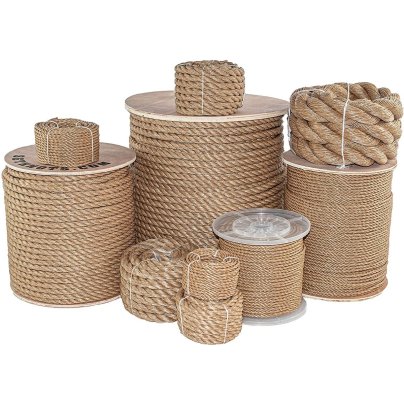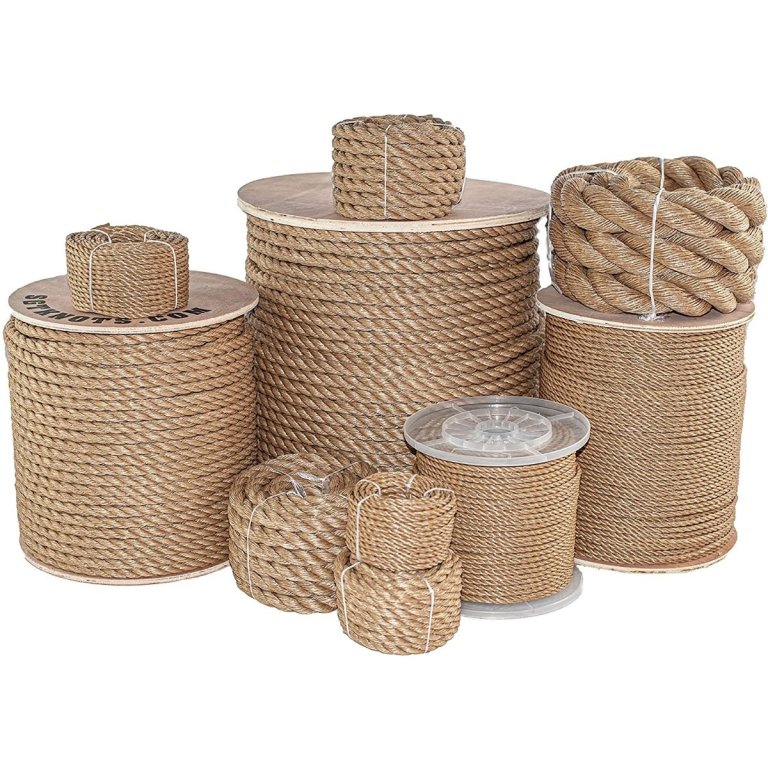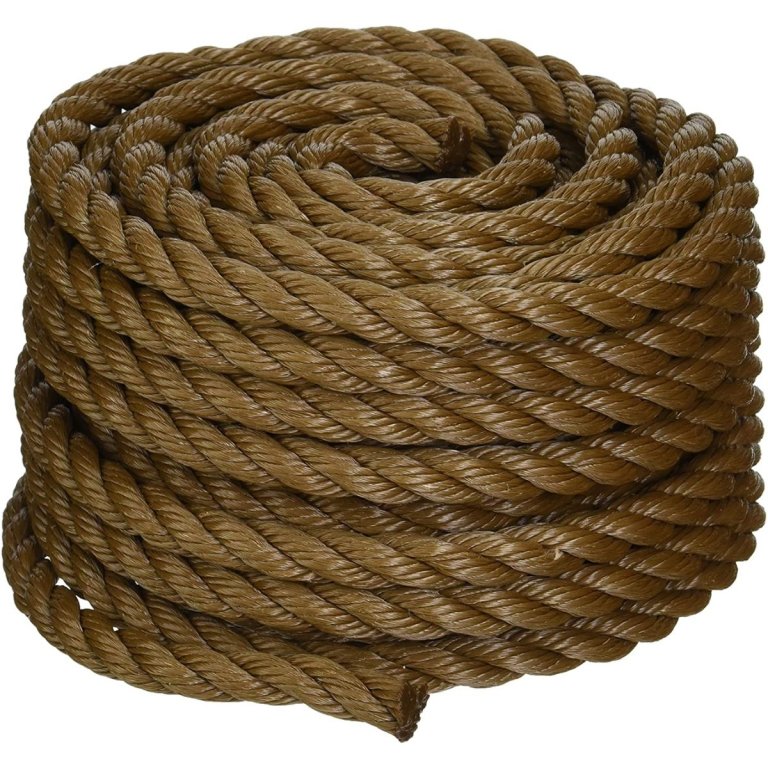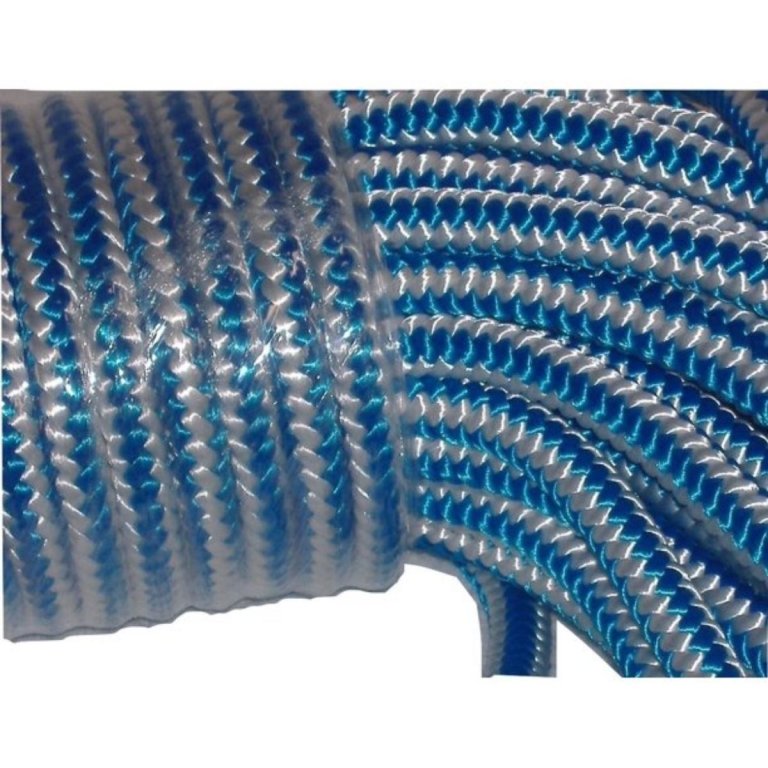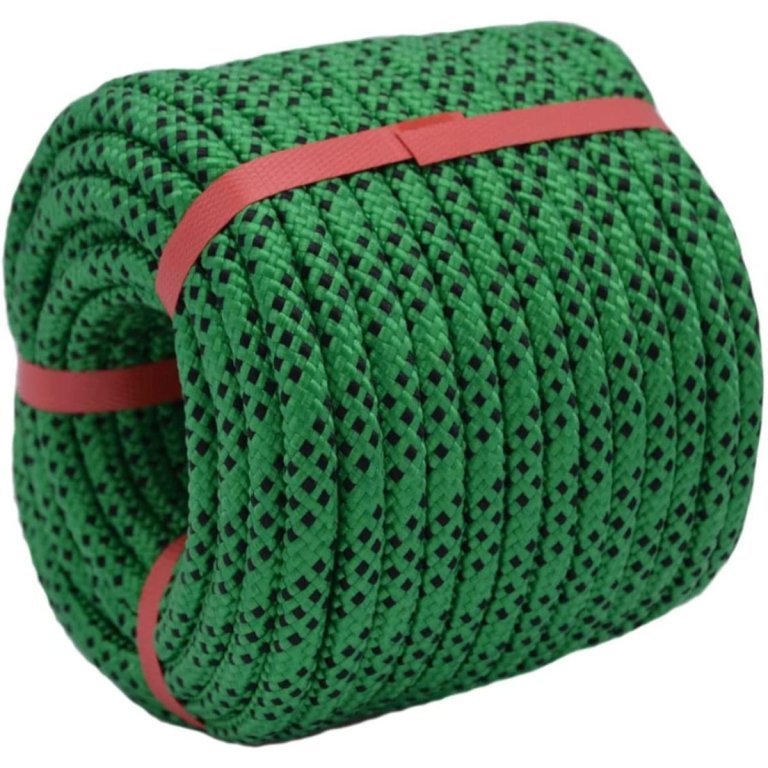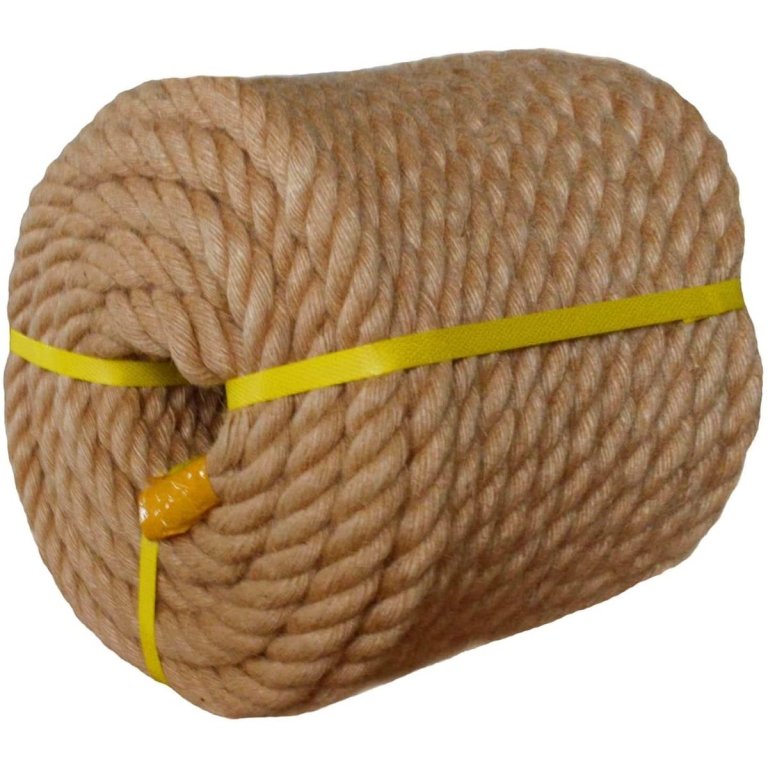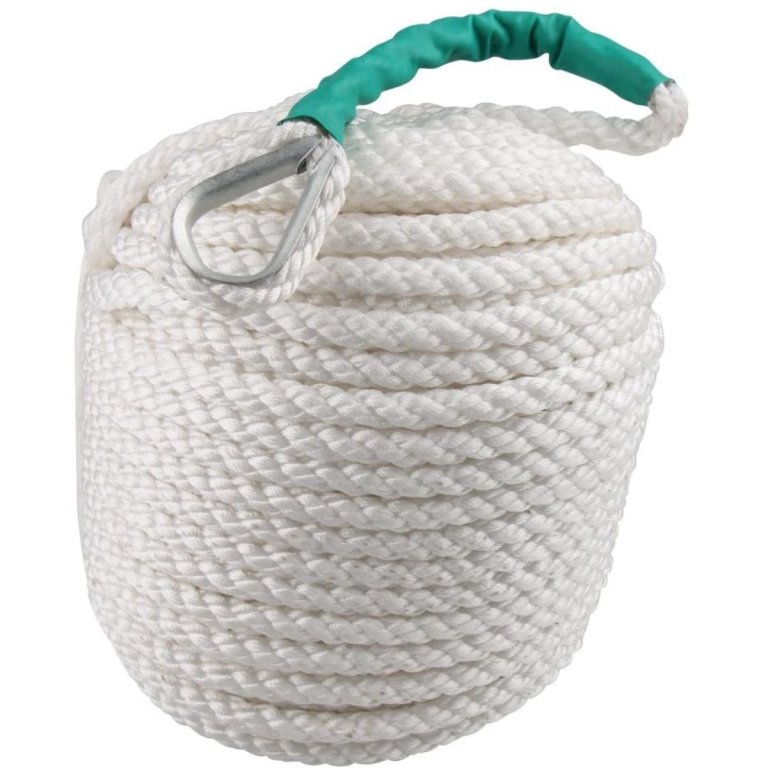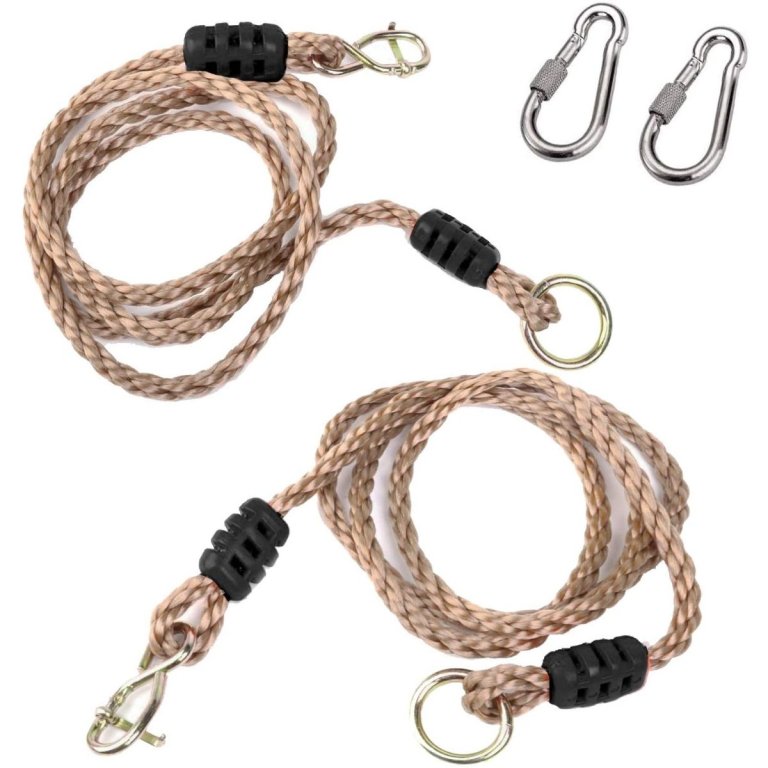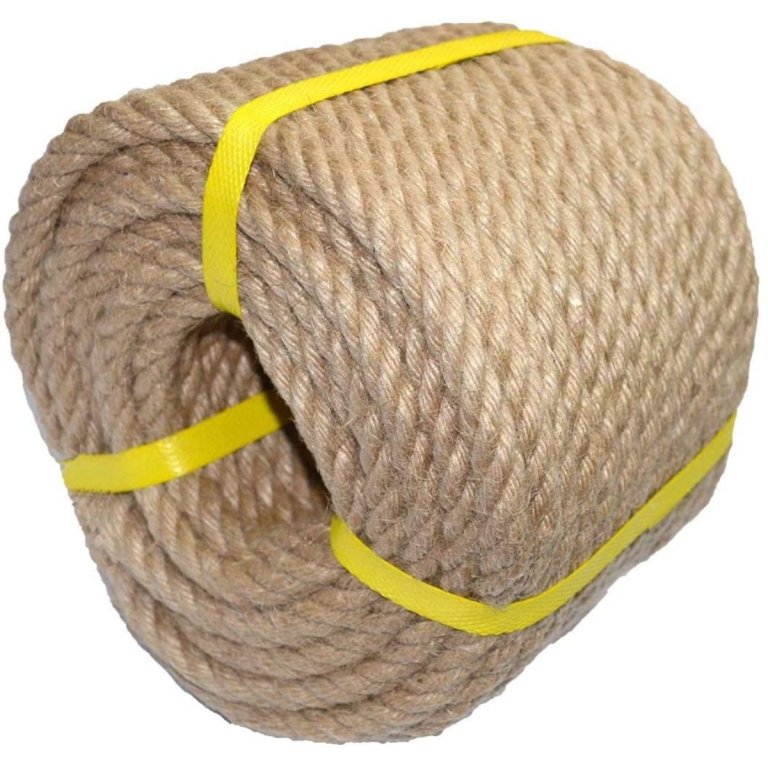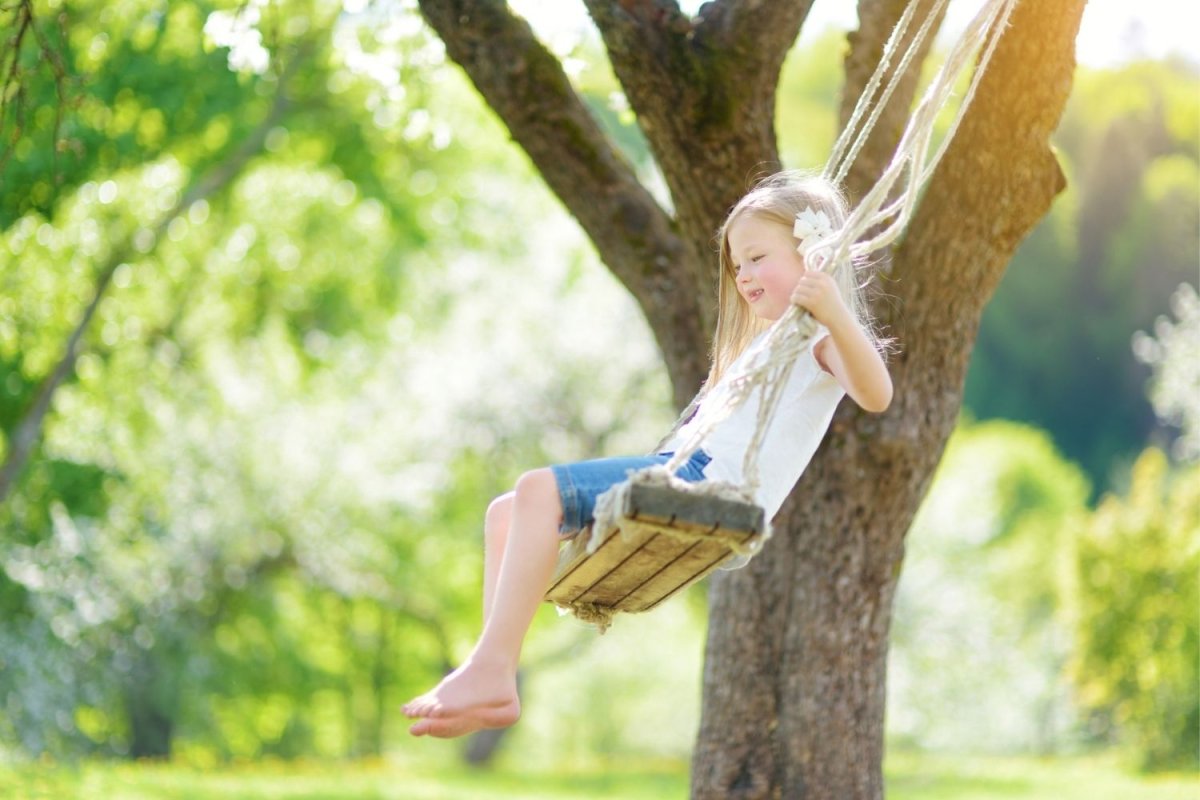
We may earn revenue from the products available on this page and participate in affiliate programs. Learn More ›
Rope swings are an old-school source of outdoor pleasure, offering a relaxing or exhilarating ride. Safety, however, is vital when it comes to setting up a tree swing—and that starts with the right rope. Tree swing ropes come in a variety of materials, ranging from synthetic polypropylene to natural hemp. They also vary in thicknesses and can be twisted or braided. Don’t let all these options tie you up in knots; instead, use this guide to learn what features and characteristics to seek when shopping for the best tree swing rope, then check out our reviews of some of the top options on the market.
- BEST OVERALL: SGT Knots Twisted ProManila Synthetic Rope
- BEST BANG FOR THE BUCK: Koch Twisted Polypropylene Rope
- BEST UPGRADE: Blue Ox 12 Strand Polyester Arborist Climbing Rope
- BEST BRAIDED: YUZENET Braided Polyester Arborist Rigging Rope
- BEST NATURAL: YUZENET Manila Jute Rope
- BEST HEAVY DUTY: Bang4buck Boat Rope
- BEST FOR HAMMOCKS: A AIFAMY Tree Swing Adjustable Hangings Nylon Rope
- ALSO CONSIDER: VEIZEDD 100% Natural Hemp Rope
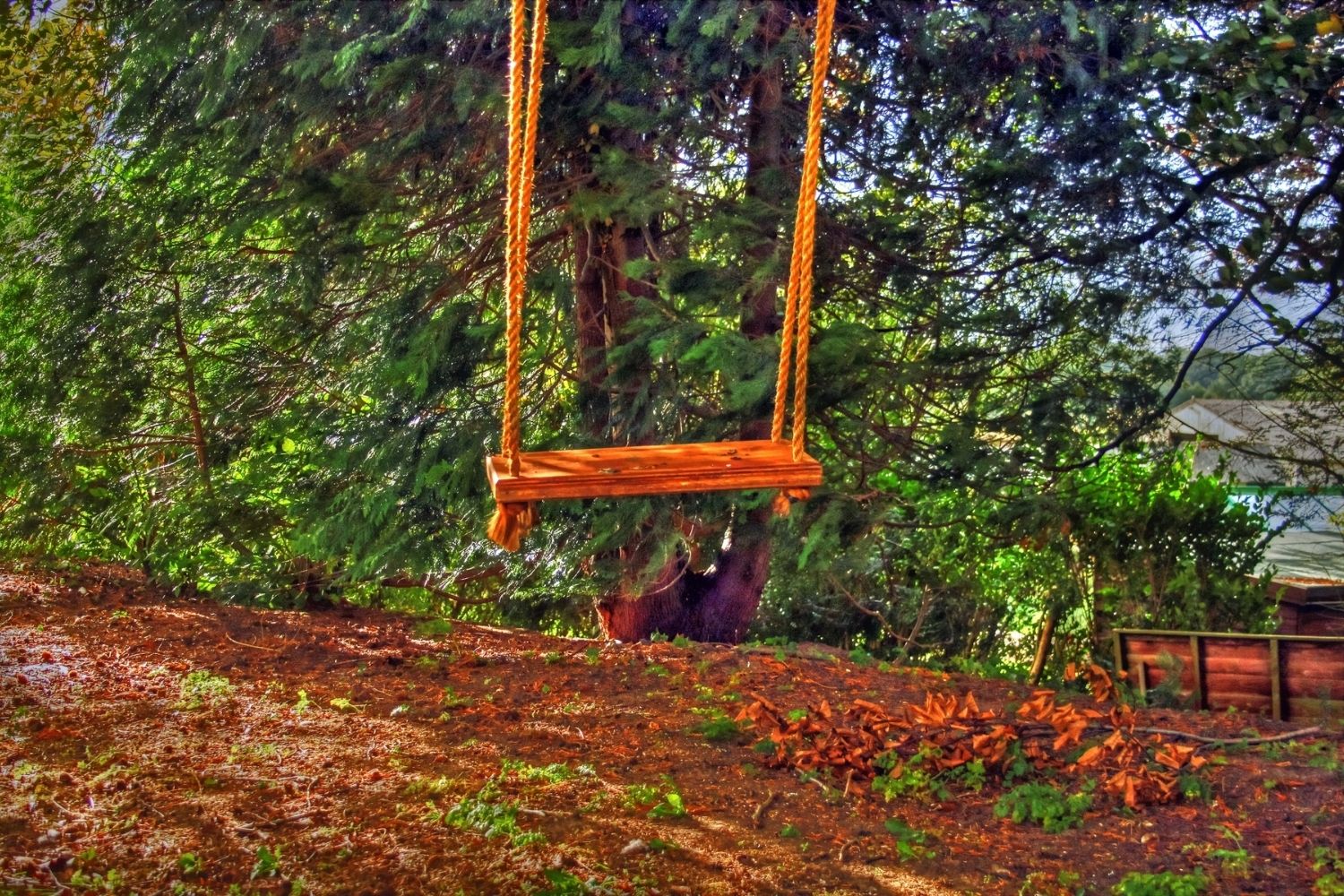
What to Consider When Buying the Best Rope for Tree Swing Use
While thickness and length are the first two things most people think about when shopping for the best rope for tree swing use, other essential attributes include type, breaking strength, and compatibility.
Types of Rope for Tree Swings
Rope typically comes in twisted and braided varieties. The former consists of individual yarns of rope twisted together to create three or more strands; then those thicker strands are entwined to create the rope. Braided rope, in comparison, consists of eight to 10 strands woven together in a plaited tube.
Braided rope is the superior choice. It’s stronger and also has a smoother feel, making it easier on the hands. It’s also more flexible, which makes braided rope easier to tie in knots, and it has less stretch, so it won’t cause the rider to sink toward the ground when sitting on the swing. Twisted rope is easier to splice together to create longer rope, but this is rarely done when constructing a rope swing.
Fibers
Rope is constructed from a variety of natural fibers, such as hemp and manila, or synthetic fibers, including polyester, nylon, and polypropylene.
Polypropylene is one of the best options for tree swings as it’s lightweight, waterproof, and capable of holding strong knots. Nylon has similar qualities to polypropylene but has a smooth feel that can make it slippery to grip.
Hemp and manila rope are natural options. While both have weather-resistant properties, hemp and manila will absorb water and eventually rot, requiring replacement in about every 2 years. Natural rope is rougher, which makes the rope easier to grip but harder on the hands.
Length and Width
It’s important to consider length as well as width when buying rope for a swing. To determine the proper length of the rope, multiply the distance from the swing to the tree limb and add 4 yards to account for the part of the rope that will be wrapped around the tree limb and swing seat. Multiply that number by two for a double-rope swing.
Use rope that’s 3/8 to 5/8 of an inch in diameter to ensure adequate strength. Some rope comes in thicker diameters of up to 1 inch. While this thicker rope is stronger, it’s more difficult to tie in knots, which can make it impractical for some types of swings.
Breaking/Tensile Strength and Working Load
Breaking strength, also known as tensile strength, refers to the maximum amount of stress a rope can withstand before it breaks. Rope strength is tested in a laboratory by incrementally increasing the tension on the rope until it snaps. Most ropes have high tensile strengths of 2,500 pounds to 8,000 pounds. While that may sound like more than enough for any swing, it’s important to understand that breaking strength does not indicate the maximum load that a swing can handle.
Working load is a better indication of the maximum weight capacity of the swing, as it takes into account the forces applied to it when it’s swinging as well as age and the condition of the rope. A rope’s working load is about 15 to 25 percent of its tensile strength. So a rope with a tensile strength of 2,500 pounds will only have a working load of about 375 to 625 pounds.
Carabiners
Many ropes for swings come with carabiners: metal rings with a spring-loaded clipping mechanism that connect the rope to the swing. While these add convenience, it’s crucial that the carabiner be strong enough to support the weight of the rider.
Make sure the carabiner is made of heavy-duty rust- and corrosion-resistant stainless steel. The minimum breaking strength of a carabiner should be 1,000 pounds to ensure it can handle the load of the rider as well as the forces that will be applied to it from the swinging motion
Installation Compatibility and Durability
Consider the design of the swing when planning the dimensions and type of rope. A rope needs to be securely attached to the swing, which may require threading the rope through holes in the board seat or tying multiple knots. So the rope must be small enough in diameter to fit through the board and flexible enough to securely tie a knot that will hold.
Also consider rope durability, which largely is determined by material (see above). Keep in mind that rope that wraps around a tree branch should also be abrasion resistant so it won’t fray under the stress and motion of swinging.
Our Top Picks
The products described below take into account the above considerations to provide rope options that are strong and durable enough to use for a tree swing. The list includes both synthetic and natural rope of varying widths and lengths to suit different types of swings.
Best Overall
SGT Knots Twisted ProManila Synthetic Rope
Pros
- Looks like natural rope
- Resists moisture, rot, and UV rays
- Multiple length and width options
Cons
- Expensive compared to other synthetic ropes
Product Specs
- Material: Polypropylene
- Diameter: 5/8, 3/4, 1 inch
- Length: 10 to 600 feet
This rope from SGT Knots combines the classic look of natural rope with the durability of synthetic fibers. It’s made from three twisted strands of polypropylene, which gives it excellent resistance to damage from water and UV rays. Its width options include 5/8-inch, 3/4-inch, and 1-inch diameters, which are ideal for rope swings. Length options range from 10 to 600 feet, enough for virtually any type of rope swing. Its natural look has old-school aesthetic appeal, so a tree swing hanging from it will have decorative charm as well as excellent functionality.
Best Bang for the Buck
Koch Twisted Polypropylene Rope
Pros
- Affordably priced
- Natural color
- Weather-resistant polypropylene material
- Various length options
Cons
- Can be difficult to knot
Product Specs
- Material: Polypropylene
- Diameter: 1/2 inch
- Length: 50 feet
This affordable polypropylene rope from Koch is a great option for those looking to hang a backyard swing on a budget. The 50-foot long, 1/2-inch wide twisted rope is made of durable polypropylene that’s weather resistant and flexible enough to knot easily. It has a smooth feel with no burrs for a comfortable grip, and its twisted construction won’t flex or stretch. Koch polypropylene rope has a natural brown color and is also available in 3/4-inch width and lengths up to 600 feet, all well-priced compared to competitive synthetic rope.
Best Upgrade
Blue Ox 12 Strand Polyester Arborist Climbing Rope
Pros
- Very high tensile strength
- Smooth feel
- Weather resistant
Cons
- Bright blue color may not suit all users
Product Specs
- Material: Polyester
- Diameter: 1/2 inch
- Length: 100, 150, 200, and 300 feet
The 12-strand design of this rope provides exceptional tensile strength of 8,000 pounds, making it well suited for heavier swings and other applications. It’s actually designed for climbing, so it’s abrasion resistant and will not stretch. With its braided construction, it has a smooth feel for a comfortable grip. Excellent flexibility makes it easier to knot than other stiffer ropes. The Blue Ox 1/2-inch rope comes in lengths of 100, 150, 200, and 300 feet in a bright blue and white.
Best Braided
YUZENET Braided Polyester Arborist Rigging Rope
Pros
- High tensile strength resists stretching
- Resistance to moisture and UV rays
- Flexible enough to knot easily
Cons
- Green color may not suit all users
- No other width or length options
Product Specs
- Material: Polyester
- Diameter: 3/8 inch
- Length: 100 feet
With a lightweight design and high tensile strength that makes it suitable for use as climbing rope and arborist rigging, this braided green polyester rope is also a great option for a rope swing. It resists moisture and UV rays and is flexible enough to tie in knots or wrap around a tree limb. Though it’s thinner than some other options at 3/8-inch thick, it features a tough nylon core that provides 3,520 pounds of tensile strength, more than enough for a swing. This rope can also be melted at the end to ensure the ends don’t pull apart or split after being cut. Yuzenet braided polyester rope comes in 100-foot lengths.
Best Natural
YUZENET Manila Jute Rope
Pros
- Exceptional tensile strength
- Natural look
- Treated to eliminate burrs
Cons
- Not as weather resistant as synthetic rope
- Expensive
Product Specs
- Material: Manila jute
- Diameter: 1 inch
- Length: 100 feet
With its natural fiber construction, this manila jute rope brings a classic look to a backyard swing, so it’s a great choice in terms of aesthetics as well as strength. The rope is 1 inch in diameter to handle heavy loads and consists of four strands of twisted manila fibers.
While many natural ropes can feel rough, this Yuzenet product receives a treatment process to eliminate potentially irritating burrs. It comes in a 100-foot length, and while its 1-inch diameter makes it stronger than thinner ropes, it can be harder to knot.
Best Heavy Duty
Bang4buck Boat Rope
Pros
- High tensile strength
- Soft feel
- Weather resistant
Cons
- Must be heat sealed after cutting to prevent unraveling
Product Specs
- Material: Polypropylene
- Diameter: 1/2 inch
- Length: 100 feet
This heavy-duty rope constructed of three strands of twisted polypropylene is designed for anchoring boats, yet it’s also a great option for rope swings. As a marine-oriented product, it’s made to resist sun and water damage. With its 1/2-inch diameter (a 3/4-inch diameter option is also available) and high tensile strength of 5,850 pounds, it has ample strength to support a rope swing or even a porch swing. It’s also soft to the touch and braided, making it comfortable to hang onto. A steel thimble spliced into the strands allows the user to attach the rope to the swing or tree limb without having to tie a knot when used with a sturdy carabiner. If cut, the rope must be heat sealed to prevent the strands from unwinding.
Best for Hammocks
A AIFAMY Tree Swing Adjustable Hangings Nylon Rope
Pros
- Adjustable length
- Carabiners and rope are weather resistant
- Abrasion-resistant material
Cons
- Not rated for standard swings
Product Specs
- Material: Nylon straps
- Diameter: 1 inch
- Length: Two 6-foot long straps
With its easy-to-use hooks and short ropes, this versatile set of ropes is a solid choice for hammocks, tire swings, and swing chairs. Each 1-inch diameter rope is 40 inches long—ideal for encircling a tree trunk and attaching to a hammock. The ropes consist of heavy-duty nylon that resists abrasion for rough bark and can hold up to 650 pounds.
Since spans can vary depending on where the hammock is set, the A Aifamy tree swing rope includes clips that allow the user to alter the hammock’s height. The kit comes with two ropes, each with spin-lock carabiner hooks that make it a snap to install and uninstall the hammock.
Also Consider
VEIZEDD 100% Natural Hemp Rope
Pros
- Natural look
- Soft feel and easy to knot
- Ample length for reaching higher branches
Cons
- Natural fibers eventually degrade with exposure to weather
Product Specs
- Material: Hemp
- Diameter: 1 inch
- Length: 100 feet
At 1/2-inch thick, this hemp rope has ample tensile strength, so it makes a worthy choice for a backyard rope swing. Its twisted design and soft feel make it easy to grip and flexible enough to knot easily. With a length of 100 feet, this rope is also capable of reaching higher branches without the need to splice. The 100 percent hemp material has a classic look for traditional backyard swings. Just keep in mind that it will absorb water and eventually rot, requiring replacement about every 2 years.
Our Verdict
For its numerous size options and weather-resistant polypropylene construction, SGT Knots Twisted ProManila Synthetic Rope is a great choice for a rope swing. Those looking for a more budget-friendly option should consider Koch Twisted Polypropylene Rope.
How We Chose the Best Rope for Tree Swings
We used several criteria when making selections for the best rope for swings. Safety is the most important factor to consider when selecting a rope, so strength was our number one priority: We only chose rope with a high enough tensile strength to support the weight of the rider, keeping in mind that a rope’s tensile strength declines as it ages and wears.
Hanging a tree swing typically requires the user to tie the rope in knots, so the best rope for a swing is flexible enough and narrow enough in diameter to hold a strong knot. Since tree swing rope will spend its life outdoors, it must be able to endure harsh weather conditions, so we chose mainly weather-resistant synthetic materials.
Tips for Tree Swing Safety
Tree swings are capable of carrying the rider well up into the air, especially if hung from a high branch, so it’s crucial to take precautions to ensure safe operation. It matters little how strong the rope is if it’s tied to a weak branch. Choose a suitable branch from a healthy, mature hardwood tree. Avoid evergreens and fruit trees, which are weaker and prone to breaking. Hang the swing so that the seat is about 24 inches off the ground to ensure adequate clearance for the rider’s legs.
The best rope for a rope swing is synthetic, so choose polypropylene when possible. It’s stronger than natural rope and better resistant to the weather. If opting for a natural rope, plan on replacing it every 2 years as it will absorb water and rot. Regularly inspect the swing seat and rope for wear and rot.
- Attach the swing to a hardwood tree branch
- Use synthetic rope or replace natural rope every 2 years
- Inspect the rope and branch periodically for damage or rot
FAQs
If you’re wondering how thick the rope for your tree swing should be or want to know the best way to hang a swing from a tree, read on for this and other important info.
Q. How thick should a rope be for a tree swing?
A rope for a tree swing should be at least 1/2 inch in diameter to make it easy to grip in the hands and strong enough to support the rider’s weight.
Q. How do I hang the rope for a tree swing?
Start by looping the rope over the tree branch. Tie a bowline knot in the rope, then attach the other end of the rope to the swing seat. Adjust the height of the swing so it sits about 2 feet off the ground, then secure the swing by tying either a bowline or figure-eight knot.
Q. Is rope or chain better for a tree swing?
While a chain is ideal for swing sets or swings that attach to metal eyelets, rope is the best choice for a tree swing that wraps around a tree branch.This is because when the swing is in action, the metal links of the chain will dig into the tree, eventually damaging it and potentially causing a safety hazard. Rope is smooth and won’t eat into the wood of the tree as easily.
Q. How do you attach a rope swing to a high branch?
Securely tie a weight, such as a rock, to the end of the rope, then throw the rock over the high branch. Tie a bowline or slip knot to close the rope around the branch while still allowing the knot to expand to allow for the growth of the limb.
Q. What is the strongest knot for a rope tree swing?
The bowline knot is the best knot for a tree swing. When tied correctly it creates a strong hold and won’t slip.
Q. What is the strongest knot for a loop at the end of a rope?
The figure eight, which is commonly used by climbers, is the best knot for creating a loop at the end of a rope.
Q. How do you make a permanent loop at the end of a rope?
By tying a bowline knot, you can create a rope with a fixed loop at the end that you can secure to virtually anything.
